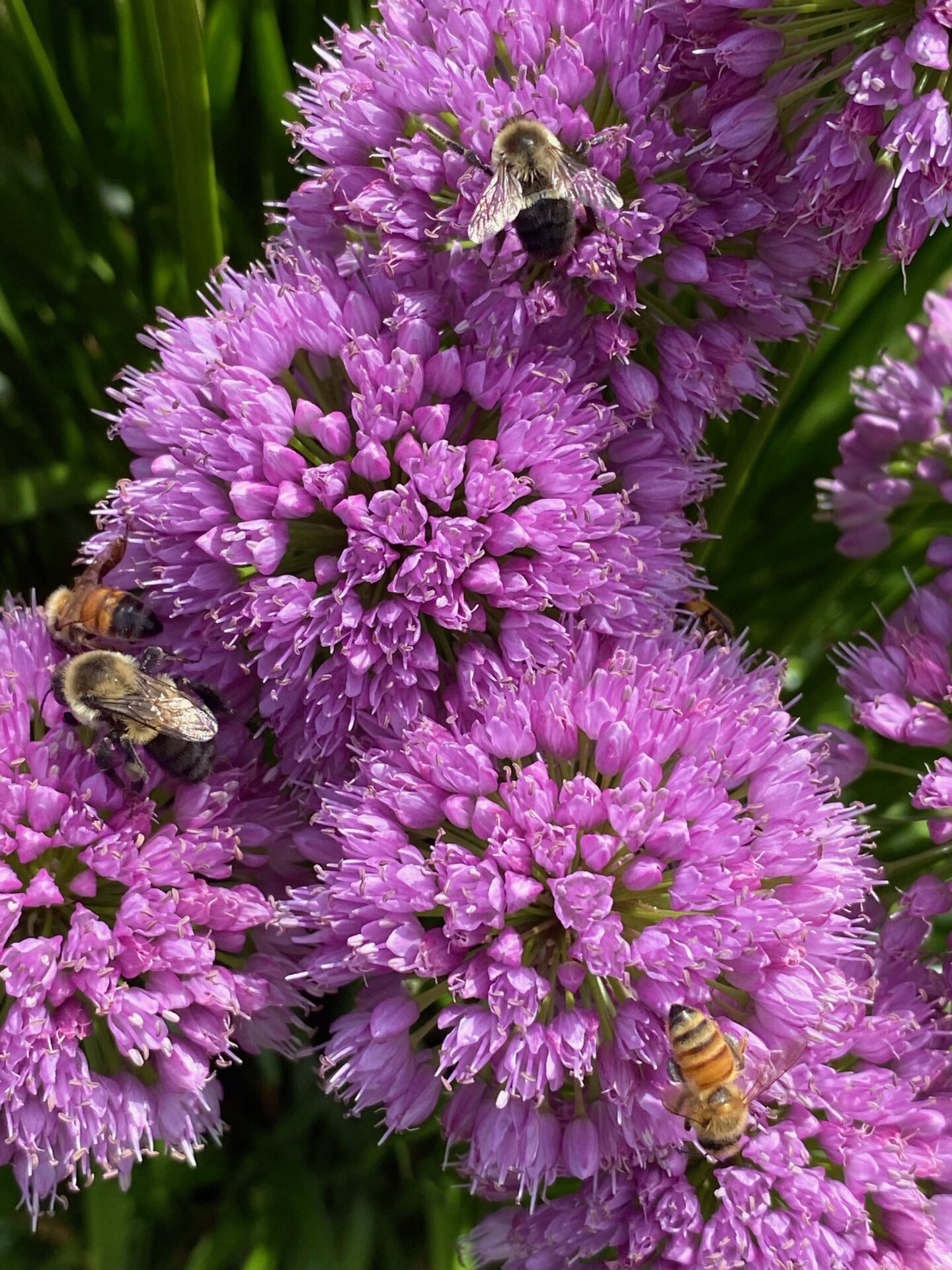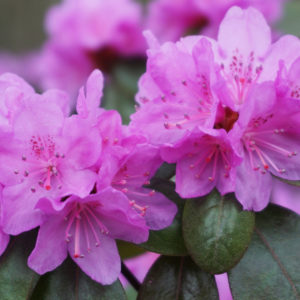Allium, more specifically those grown for their ornamental flowers, are a great addition to flower borders. They thrive in full sun, are drought tolerant once established and most important to Massachusetts gardeners, they are deer and rabbit resistant. Their flowers are a draw for pollinators, particularly bees, and those varieties that have spherical blooms often extend their season of attractiveness in that their seedheads provide interesting structure to the garden.
Alliums bloom from late spring right through the summer so it is possible to have weeks of interest from them. Most, but not all grow from bulbs, so they can be bought and planted as bulbs in the fall or as growing specimens about to flower in the spring and summer.
They can vary in size from 6” to up to 4’ depending on the variety and while most are often purple in color, the flowers can be white, yellow, pink or blue depending on variety. While there are many to choose from, listed below are a few favorites.

A. Millenium and its sport A. Serendipity come into bloom late July-early August. At around 12-15″ tall when flowering they make a colorful statement in the front of a border. These you will find as plants during the growing season as their growth habit is more rhizomatous. A. Millenium has deep green narrow leaves and dark purple flowers around 1” in diameter. A. Serendipity has paler, blue-green leaves and slightly larger flowers of a paler purple.
A. Mt. Everest, as its name suggests, is pure white, producing large white flowers on stems about 3′ tall. With its large flower heads, it can add visual interest once it has gone to seed, or the stems can be cut to use in dried arrangements. It can be paired with another tall variety, A. Gladiator which is of similar size but has reddish-purple flowers. These flower in late spring and early summer, giving color before many perennials are ready to bloom.
With a different form to its flower clusters, A. sphaerohcephalon earns the common name of drumstick allium. The tight cluster of purple flowers are more egg-shaped than spherical and are held on stems 2-3′ tall. With narrow, minimal foliage this allium can blend into other plantings with ease and blooms from late spring into summer.
At the other end of the size spectrum, A. moly Jeannine, a cultivar of yellow garlic, comes in at just 8-12″ tall. The outstanding thing about this cultivar is the bright yellow flowers as its common name indicates. Another summer bloomer, this allium also performs well at the front of the border and while it does well in full sun it can also take some shade.
Another unusual allium that is almost more interesting having gone to seed is A. christophii. Commonly known as Star of Persia, it has clusters of star-shaped silvery purple flowers making a huge globe about 8” in diameter. At about 12” tall its seedheads make for a dramatic feature in the garden.
For those who are looking for something native, look no further than A. cernuum, nodding pink onion. Somewhat shorter, it produces stems about 1-2′ tall with its flowers hanging down instead of being in a spherical cluster. Flower color varies from white through shades of pink and it is particularly hardy, being cold tolerant to Zone 3. While it can grow in dry conditions, its preference is for greater moisture than other allium mentioned.
These are just several of the many types of allium available to customers. For those varieties that bloom in the latter half of summer, they can be found in our perennial section, while those who wish to plant bulbs can look out for them around the beginning of September. And lastly, even the humble chive plant can be grown as an ornamental – although chive flowers are just as tasty as their leaves. Those can be found in our vegetable section or if currently unavailable, we also carry seeds.







